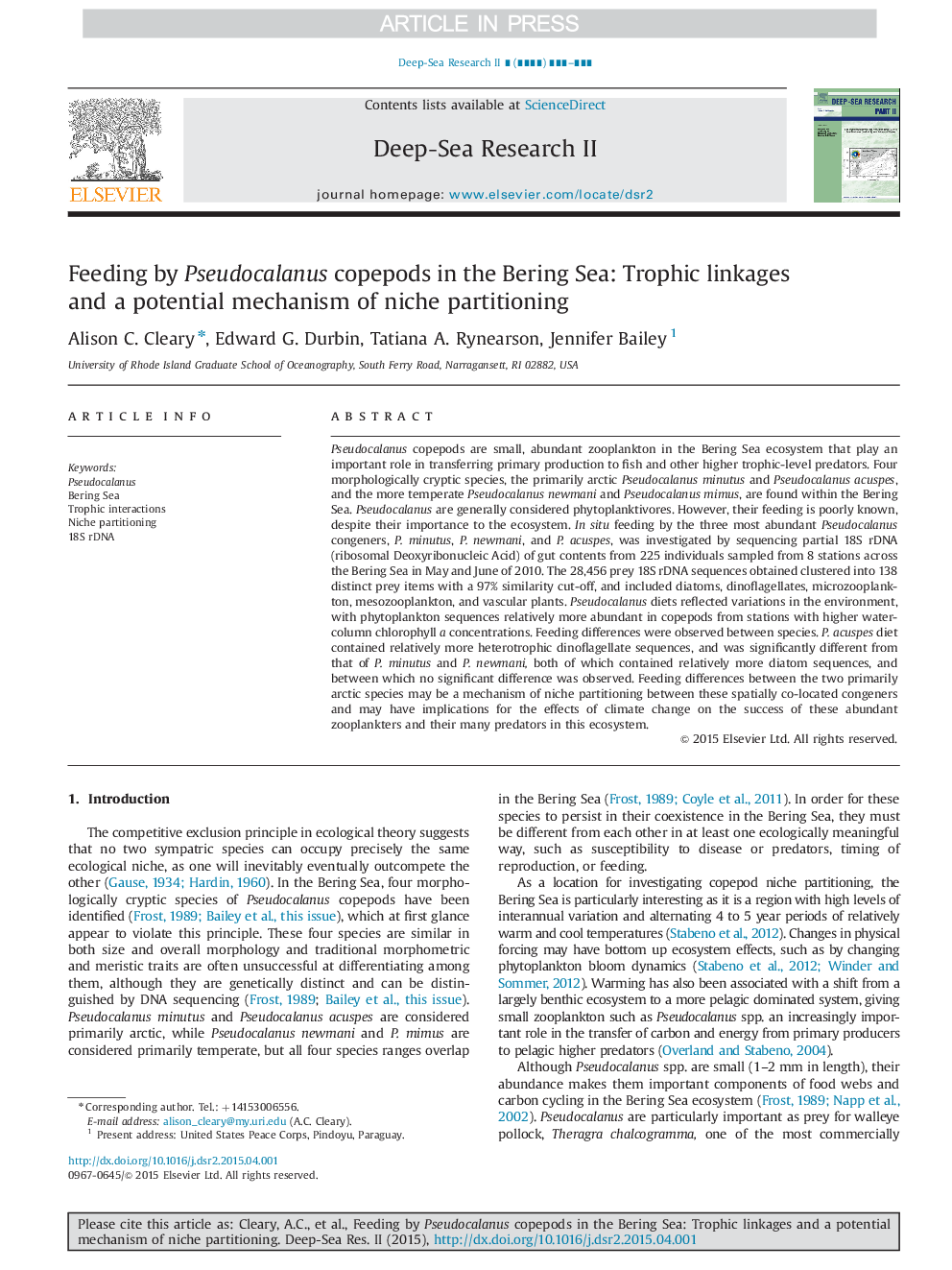| کد مقاله | کد نشریه | سال انتشار | مقاله انگلیسی | نسخه تمام متن |
|---|---|---|---|---|
| 5764989 | 1626408 | 2016 | 9 صفحه PDF | دانلود رایگان |
عنوان انگلیسی مقاله ISI
Feeding by Pseudocalanus copepods in the Bering Sea: Trophic linkages and a potential mechanism of niche partitioning
دانلود مقاله + سفارش ترجمه
دانلود مقاله ISI انگلیسی
رایگان برای ایرانیان
کلمات کلیدی
موضوعات مرتبط
مهندسی و علوم پایه
علوم زمین و سیارات
زمین شناسی
پیش نمایش صفحه اول مقاله

چکیده انگلیسی
Pseudocalanus copepods are small, abundant zooplankton in the Bering Sea ecosystem that play an important role in transferring primary production to fish and other higher trophic-level predators. Four morphologically cryptic species, the primarily arctic Pseudocalanus minutus and Pseudocalanus acuspes, and the more temperate Pseudocalanus newmani and Pseudocalanus mimus, are found within the Bering Sea. Pseudocalanus are generally considered phytoplanktivores. However, their feeding is poorly known, despite their importance to the ecosystem. In situ feeding by the three most abundant Pseudocalanus congeners, P. minutus, P. newmani, and P. acuspes, was investigated by sequencing partial 18S rDNA (ribosomal Deoxyribonucleic Acid) of gut contents from 225 individuals sampled from 8 stations across the Bering Sea in May and June of 2010. The 28,456 prey 18S rDNA sequences obtained clustered into 138 distinct prey items with a 97% similarity cut-off, and included diatoms, dinoflagellates, microzooplankton, mesozooplankton, and vascular plants. Pseudocalanus diets reflected variations in the environment, with phytoplankton sequences relatively more abundant in copepods from stations with higher water-column chlorophyll a concentrations. Feeding differences were observed between species. P. acuspes diet contained relatively more heterotrophic dinoflagellate sequences, and was significantly different from that of P. minutus and P. newmani, both of which contained relatively more diatom sequences, and between which no significant difference was observed. Feeding differences between the two primarily arctic species may be a mechanism of niche partitioning between these spatially co-located congeners and may have implications for the effects of climate change on the success of these abundant zooplankters and their many predators in this ecosystem.
ناشر
Database: Elsevier - ScienceDirect (ساینس دایرکت)
Journal: Deep Sea Research Part II: Topical Studies in Oceanography - Volume 134, December 2016, Pages 181-189
Journal: Deep Sea Research Part II: Topical Studies in Oceanography - Volume 134, December 2016, Pages 181-189
نویسندگان
Alison C. Cleary, Edward G. Durbin, Tatiana A. Rynearson, Jennifer Bailey,